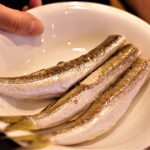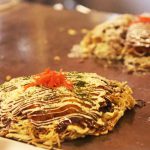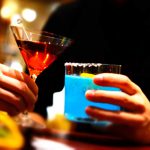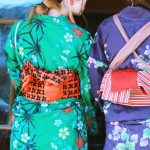
Shinminato, a Town Built on Fishing and Shipping
Shinminato, a district in Imizu City, is a port town located along the Japan Sea in the Hokuriku region.
Fishing has provided a livelihood to people here since the Nara period, almost 1,300 years ago.
The town faces Toyama Bay, which is known for the steep, complex grade of its submarine valley--sometimes called aigame, after the deep, indigo color of the water.
The Shinminato fishing port is the finest in Toyama in terms of the quality, quantity and variety of fish it handles.
Fishing has provided a livelihood to people here since the Nara period, almost 1,300 years ago.
The town faces Toyama Bay, which is known for the steep, complex grade of its submarine valley--sometimes called aigame, after the deep, indigo color of the water.
The Shinminato fishing port is the finest in Toyama in terms of the quality, quantity and variety of fish it handles.
Shiminato is also said to have been the site of the oldest city in the prefecture,
and the area has attracted a vibrant population and industry since ancient times.
During the Kamakura period, this was the seat of the Etchu provincial authority (the historical name for what is now Toyama) and served as the administrative, economic and cultural center of the region.
For a short while, it was also the site of the Hojozu bakufu, or regional military government, which had an enormous impact on the area's artistic and cultural development.
During the Edo period, the port flourished as hub for trade in a wide range of goods.
and the area has attracted a vibrant population and industry since ancient times.
During the Kamakura period, this was the seat of the Etchu provincial authority (the historical name for what is now Toyama) and served as the administrative, economic and cultural center of the region.
For a short while, it was also the site of the Hojozu bakufu, or regional military government, which had an enormous impact on the area's artistic and cultural development.
During the Edo period, the port flourished as hub for trade in a wide range of goods.
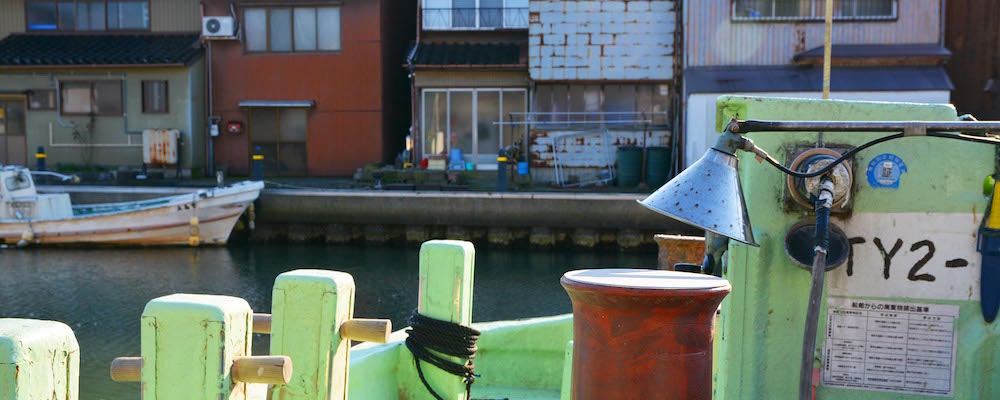
A Stroll Along the Uchikawa, Camera in Hand
The Uchikawa River runs right outside our doors. Much of the townscape along this canal remains largely unchanged from pre-World War II days, and in parts appears almost like a movie set. Extending almost two kilometers east to west, the canal is crossed by a series of 13 uniquely designed bridges, and on a clear day, you can see all the way to the Tateyama mountain range, its peaks reaching as high as 3,000 meters.
Fishing boats line the Uchikawa River, and along its banks, you can get a feel for the everyday lives of the people here. The area features a mix of both old-fashioned shop-lined streets and newer spots, making it ideal for a leisurely stroll.
Since ancient times, this region has weathered the elements while welcoming a wide variety of people and cultures, giving this fishing port an open, warm atmosphere. It also has a great concentration of temples, shrines and altars to Jizo, a Buddhist diety known locally as Onzohan, adding to the unique ambience. Why not take a walk and explore for yourself?
Fishing boats line the Uchikawa River, and along its banks, you can get a feel for the everyday lives of the people here. The area features a mix of both old-fashioned shop-lined streets and newer spots, making it ideal for a leisurely stroll.
Since ancient times, this region has weathered the elements while welcoming a wide variety of people and cultures, giving this fishing port an open, warm atmosphere. It also has a great concentration of temples, shrines and altars to Jizo, a Buddhist diety known locally as Onzohan, adding to the unique ambience. Why not take a walk and explore for yourself?
New Shops in Old Homes
All of these businesses are within a 10-minute walk. Feel free to inquire about reservations and other information.
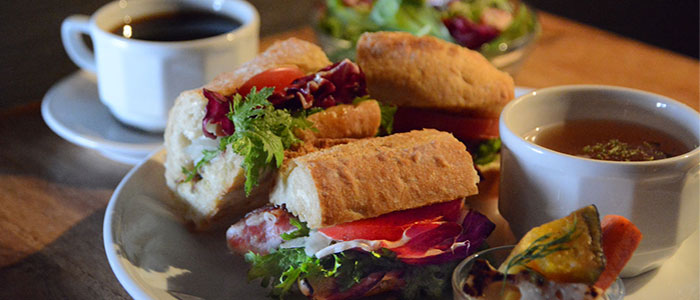
cafe uchikawa Rokkakudo
This café is in a former tatami mat shop, and offers a variety of sandwiches made with organic ingredients, along with the finest hand-drip coffee. Beer, wine and a separate dinner menu are also available.
shop HP
Allow us to reserve a table for you (make your request when you reserve your room).
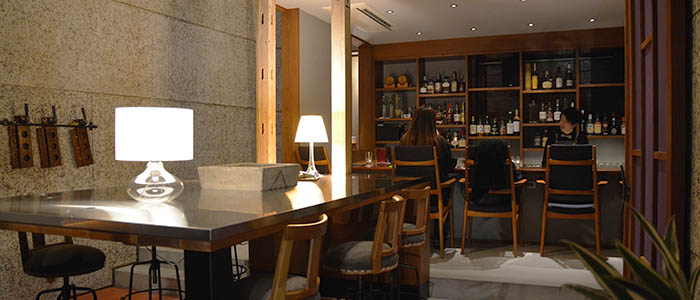
BRIDGE BAR
An American who grew up in Hawaii runs this bar featuring over 50 varieties of American whiskey, along with a selection of original cocktails and non-alcoholic beverages. Look for the blue neon sign along the Uchikawa River, just steps from Sanno Bridge.
shop HP
Allow us to reserve a table for you (make your request when you reserve your room).
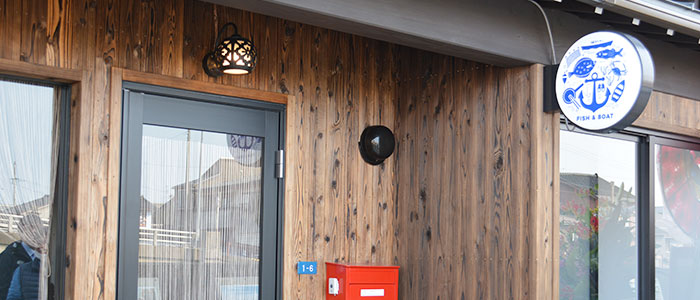
FISH&BOAT IMATO
This high-end fish shop is owned and operated by a local fisherman. His offerings include fresh flounder, blue crab and rockfish; he also prepares an assortment of dried seafood, even richer in flavor. His fish preparation classes and fishing boat tours are especially popular with visitors.
shop HP
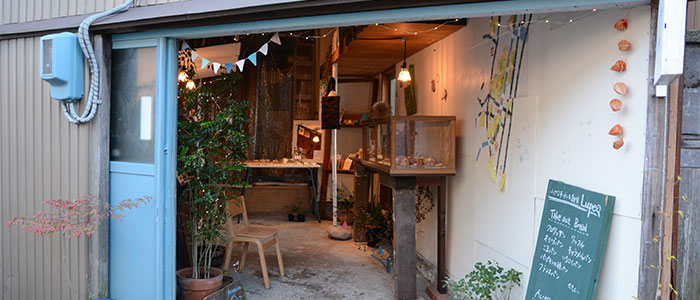
Lupe--A Small Kitchen and Sundries Shop
Lupe is a sister shop of café Uchikawa Rokkakudo that offers snacks, fresh baked goods and hand-made accessories, some of which feature illustrations of local scenery--perfect for gifts.
お店HP
Lupe can be opened outside of regular hours upon request (make your request when you reserve your room).
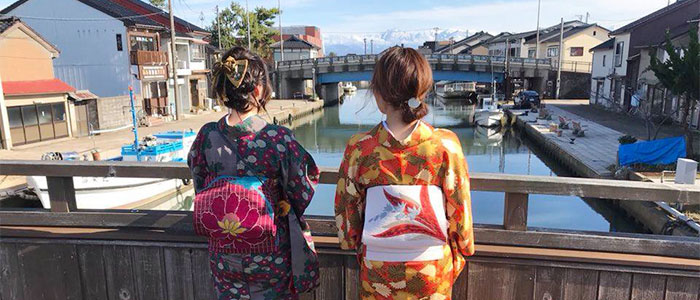
KIPPO
A rental kimono and dress shop, KIPPO provides everything you need to experience traditional Japanese kimono, from help with dressing to rental accessories. Their large stock of antique kimonos features old-fashioned styles and kawaii designs, making them perfect for a stroll along the Uchikawa River (dresses also available for young girls).
shop HP
Allow us to reserve a table for you (make your request when you reserve your room).
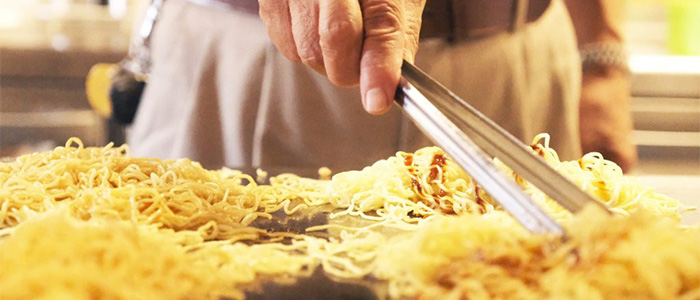
Tominoya
A hiroshima-style okonomiyaki shop, Tominoya has 6 sheets as the counter and you can take away. ※Hiroshima-style okonomiyaki is a Japanese-style pizza made from flour, cabbage, pork, egg and Chinese noodles. We eat it with sweet and savory sauce similar to Worcestershire sauce.
shop HP
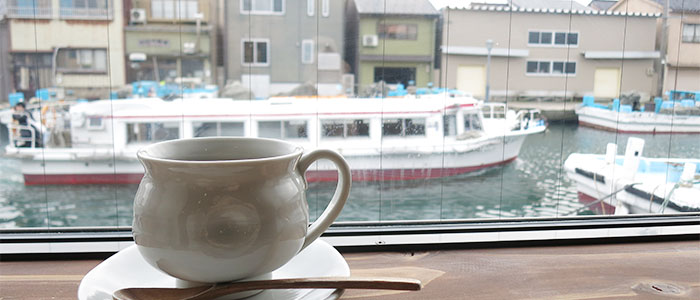
Banya Café
Over a century old, this former home of a shipping agency has been renovated and now features a café and gallery. Its menu features products and ingredients from shops in the neighborhood--from tea, to traditional sweets, to butchers and bakers--offering an easy way to enjoy a variety of local flavors in one place.
shop HP

364 Days of Preparation for a One-day Festival
Shinminato is home to a number of traditional festivals that have continued since the Edo period, the most well-known of which are the spring lion dances, held in May, and autumn's Hikiyama Festival, held at the end of October.
The lion dances are a way of expressing gratitude to the local Shinto deities for offering prosperity and protection during the previous year. Just as the spring cherry blossoms begin to fade, you begin to hear the echoes of hayashi (the flute-and-drum accompaniment to lion dances) practice, and the overall mood of the town grows restless in anticipation. On the day of the lion dances, troupes from each neighborhood dance through the streets--typically, a lion with an enormous, carved wooden head and long body; a tengu, or long-nosed goblin, whose job is to provoke the lion; and a number of kiriko, children wearing conical hats adorned with colorful paper flowers. Their rhythmical dancing depicts ancient stories that are often different from one neighborhood to the next. After dark, the troupes heighten the thrill of the dance with torches, a unique feature of lion dances in Shinminato.
The Hikiyama Festival in the fall attracts throngs of visitors from near and far, and is part of the annual autumn festival of Hojozu Hachimangu, the area's main Shinto shrine. From early morning to late at night, teams maneuver a total of 13 extravagantly decorated, wheeled floats--one representing each of the area's 13 neighborhoods--along a route that takes them through much of the old town. During the day, the floats are colorful and festive; at night, they take on a dramatically different appearance with the addition of dozens of lanterns. Maintaining and preparing the floats takes a great deal of work, and it is no exaggeration to say that those involved spend the entire year just getting ready for this one special day.
The residents of Shinminato use their festivals to reaffirm their connection to nature and to reinforce their bonds with one another.
Nearby Attractions




